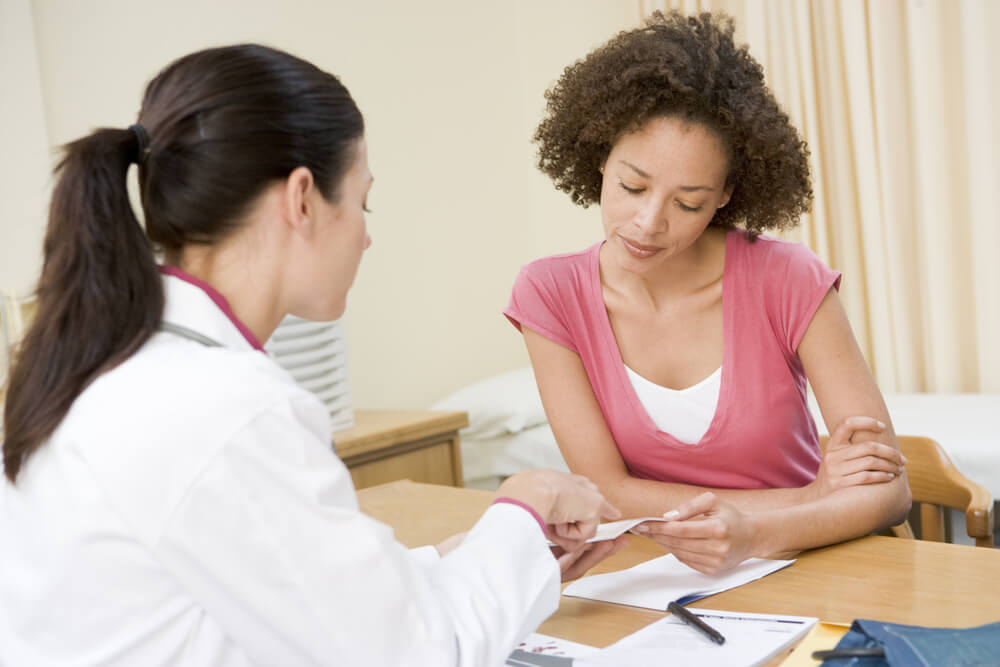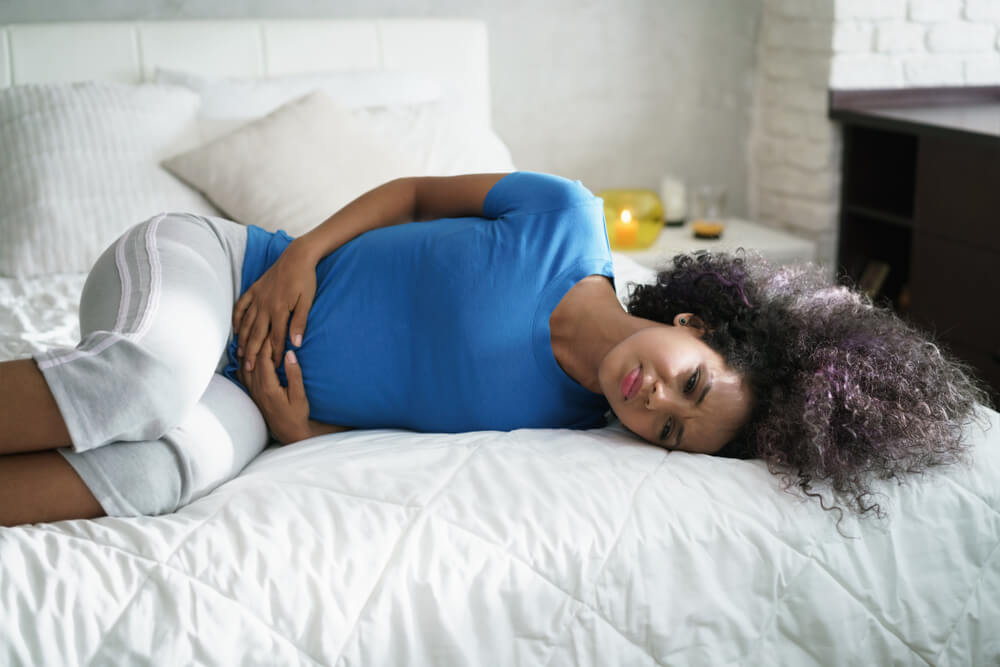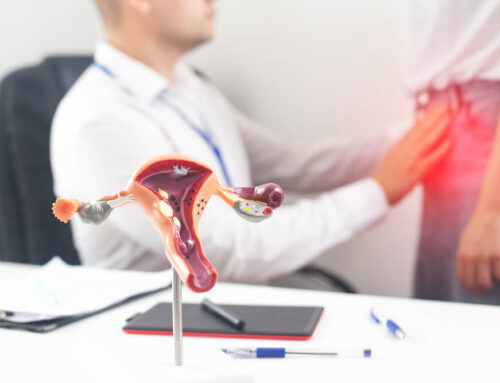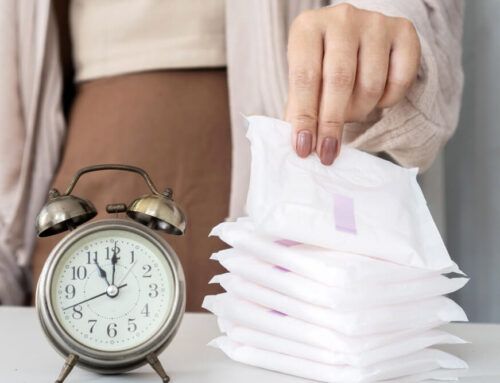Women typically experience menstrual cramps before, during, and sometimes even after their period. Typically, these cramps are relatively mild and last no longer than a couple of days. However, in some cases, they can present themselves as unbearable period pain that significantly affects the woman’s daily life. The pain is triggered by the contractions of the uterus and is a completely normal part of the period. But what about severe menstrual cramps? Keep on reading to learn more about the potential causes of extremely painful menstrual cramps and ways to manage them.
How to Tell Whether You Suffer from Severe Menstrual Cramps
Menstrual cramps usually feel like throbbing lower abdomen pain, sometimes accompanied by pressure in that area. The pain may also affect the inner thighs and lower back. In general, cramping will start a day or two before the period and usually doesn’t last longer than two to three days. Aside from cramps, women may experience other symptoms as well, such as:
- Headache
- Loose stool
- Fatigue
- Nausea
- Dizziness
The typical period pain is bearable and easily manageable with over-the-counter pain meds. On the other hand, severe menstrual cramps start earlier and last longer, and sometimes they don’t respond well to regular pain relievers.
If you’re wondering whether you experience period cramps worse than normal, look for the following symptoms:
- The cramps don’t lessen in intensity even after taking pain relievers
- You feel unbearable period pain that prevents you from doing regular daily activities
- Aside from severe menstrual cramps, you also notice heavier flow or clotting
Potential Causes of Unbearable Period Pain

Essentially, women get their period when there’s no pregnancy, and the uterus needs to shed the lining. In order for this to happen, hormone-like substances prostaglandins trigger the uterus contractions. When the prostaglandins levels are higher than what’s typical, women tend to experience period cramps worse than normal.
Of course, it’s possible to experience severe menstrual cramps for no apparent reason or cause. Also, other underlying medical conditions could be the reason for the extreme period pain.
Endometriosis
In the case where uterine lining cells start growing outside the uterus, women are diagnosed with endometriosis. This condition is chronic, but it’s not cancerous, most commonly accompanied by pelvic pain. Other symptoms might follow as well, such as:
- Heavy bleeding during period
- Bleeding between the periods
- Period bleeding that lasts longer than seven days
- Painful sexual intercourse
- Pain with bowel movements
- Gastrointestinal pain
- Issues to conceive
Polycystic Ovary Syndrome (PCOS)
One in ten women of childbearing age is affected by PCOS hormone disorder. The common symptoms include irregular periods and abnormally high androgen levels, but it’s also possible to experience the following:
- Heavier and longer periods
- Acne and skin issues
- Excessive hair growth on the face and body
- Issues with weight gain and management
Fibroids
When noncancerous growths form inside/outside of the uterus, they are called fibroids. They can vary in size and number. Typically, they don’t cause any noticeable symptoms, but when they do, they can cause burning period pain together with some other signs:
- Leg and lower back pain
- Pressure in the pelvic region
- Heavy and prolonged periods
- Need to urinate often
- Issues with properly emptying the bladder
- Constipation
Pelvic Inflammatory Disease (PID)
STDs like gonorrhea and chlamydia, as well as other infections, can also cause PID bacterial infection. Women affected by PID would usually experience pelvic pain and potentially other symptoms like:
- Pain and/or bleeding during intercourse
- Vaginal discharge of a bad odor
- Spotting in between two periods
- Burning when trying to urinate
- Fever
Cervical Stenosis
Cervical stenosis also referred to as a closed cervix, is a condition that involves a rather narrow or completely closed cervical opening. Women can be born with it or get affected by it later in life. This condition can make it difficult for menstrual blood to leave the body, which in turn causes irregular and light periods. It can also make conceiving very challenging.
Adenomyosis
Uterus thickening is called adenomyosis, and it happens due to the growth of endometrial tissue in the uterine muscles. Since the tissue continues its regular function where it thickens, breaks down, and then gets shed, it can cause the uterus itself to grow too large. The condition may be completely asymptomatic, but it can also cause severe and burning period pain.
Intrauterine Device (IUD)
An IUD is a type of birth control. Essentially, it’s a small device that gets inserted into the uterus. Most women have no issues with IUDs, but some side effects could happen, such as:
- Period cramps worse than normal
- Heavier flows during the period
- Irregular periods
In very rare cases, bacteria can enter the uterus during the IUD placement, causing PID. IUD could also move, triggering pelvic pain in the process, but that is also rather uncommon.
How to Find Out the Cause of Severe Menstrual Cramps?

Make sure to get in touch with your doctor if you notice that your menstrual cramps are getting noticeably more painful than before. You can always count on Dr. Susan Beil, a specialist in women’s gynecological care. Aside from helping her patients, she also makes sure to educate them about their health.
In order to pinpoint the potential cause of unbearable period pain, the doctor will need your full medical history. They will perform a physical exam, which would often involve a Pap smear and pelvic exam. If there are other symptoms present aside from severe cramping, it might be necessary to do additional tests, such as a CT scan, an ultrasound, and/or a gynecologic laparoscopy.
Ways to Manage Burning Period Pain
Chances are you’ll need medical assistance and prescription treatment to manage really severe menstrual cramps. However, there are also several things that you could try on your own, especially when there’s no underlying condition that’s causing the intensity of the period pain.
- You can try taking over-the-counter pain relievers such as acetaminophen and ibuprofen a day before the cramping typically starts.
- Taking additional supplements such as vitamins B1 and B6 as well as magnesium and omega-3 fatty acids could help minimize the severity of the period pain.
- Engaging in aerobic exercises at least three times a week for half an hour could significantly minimize period pain within eight weeks.
- Try using a heating pad on your lower abdomen.
- Just like the heating pad, taking hot baths could also help with pain in the lower back and abdomen.
- Most women experience severe menstrual cramps as a response to daily stress, which is why stress management activities such as yoga and mindful hobbies could help.
Keep in mind that there’s absolutely no reason for you to endure extreme period pain that affects your daily life. If that is the case, you should schedule an appointment with your doctor as soon as possible. This is the only sure way to discover the cause of the pain and get the help you need to manage it. Don’t hesitate to reach out to us at Women’s Health Partners Obstetricians and Gynecologists for full-service OBGYN care in a comfortable, private, and family-oriented environment.





